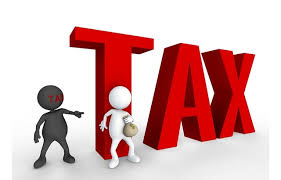 February 2016
February 2016
Our Readers Ask ……….
In response to “How Planning Controls how the Yonge North Corridor Develops” one reader writes “I think that a simple discussion about where the municipality gets its tax revenues from would be prudent. For example a tax on one house at a specific location versus a 36 story condo building with 360 condo units in it using simple language would be prudent. Also, where does the money go would answer a number of questions.”
Toronto Condo News set out to answer these questions using the 2014 Toronto Budget. Note that some graphs in this article reflect more recent 2015 budget data.
City Budgeting
Toronto is, financially speaking, well managed. Property taxes are among the lowest in the region with recent increases at about the rate of inflation. Part of this success can perhaps be attributed to operating in similar fashion to what is required of condo corporations. As with condo corporations, the city must pay operational costs and maintain its infrastructure.
Toronto maintains two separate budgets – one for operational costs and another for infrastructure.
The operating budget covers day-to-day spending on services such as recreational programs, parks maintenance, beaches and city roads, police and other emergency services.
The capital budget is similar to a condo reserve fund. It sets aside future funding for the construction and repair of transit, roads, bridges, public buildings – such as libraries, community centres and fire stations, – parks and other major infrastructure projects over a ten year period.
Where does the municipality get its tax revenues from?
The 2014 Operating Budget is $9.6 billion. Of this total, 39.2% comes from property taxes. There is no breakdown of property taxes based on location or type of housing. Another 22.5% comes from subsides and grants. This reflects money provided to the city from other levels of government. Of the remaining 38.3%, nearly half comes from various user fees
The 2014 Capital Budget is $18.6 billion. Of this total, 6% comes from development charges which include fees paid by condo developers. Another 32% are subsidies provided by other levels of government. Borrowed money, debt, represent 18% of this budget. Current revenues account for 21% of the total.
Where does the money go?
Over 50% of the 2014 Capital Budget is committed to transportation services which include the TTC. Another 18% is committed to the Scarborough Subway Extension and 4% is for the Spadina Subway Extension.
While we know that development charges are part of the Capital Budget and that $1.1 billion was anticipated in 2014, there is little information about how this money is used within specific communities.



